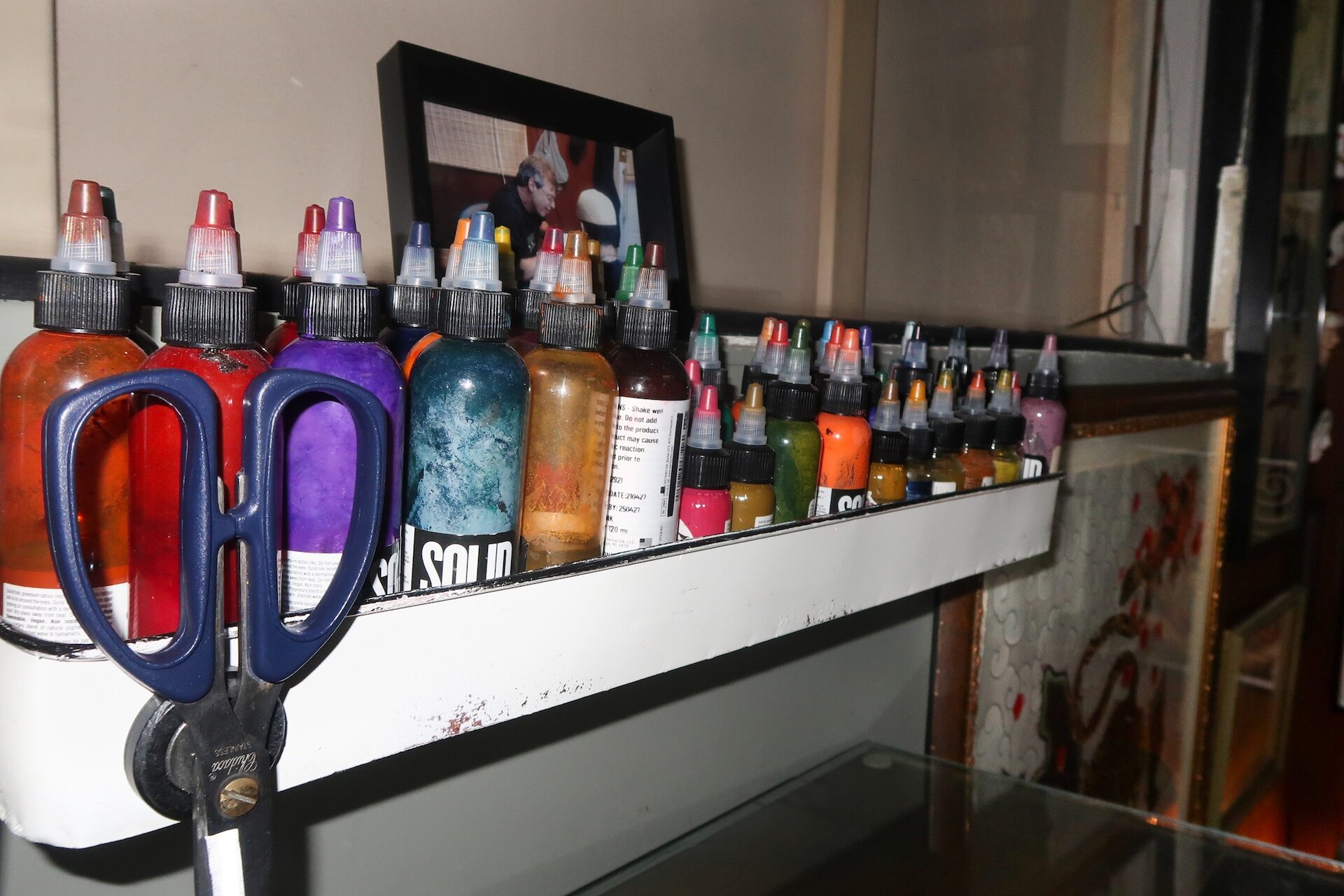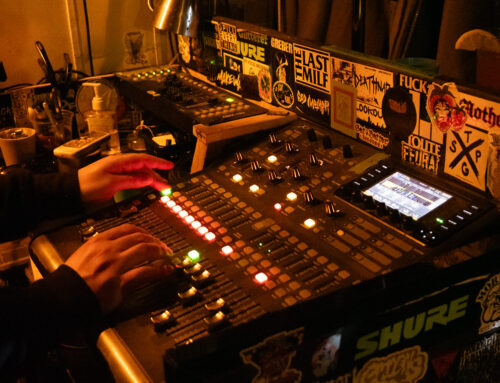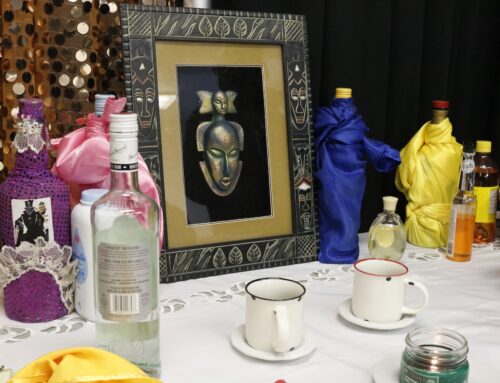BY Nadia Liboneye & Alessandro Commisso
When Tara Bigeault looks down at her right hand, she doesn’t just see a bold insignia of one of her favourite bands, the Black Veil Brides. She also sees a permanent connection to a man who shaped her life: Her grandfather.
“I got the tattoo when I was about 14 or 15,” she recalls. “My grandfather had a small tattoo between his thumb and index finger, and after he passed away, I knew I wanted to have something in the same spot.”
For Bigeault, this tattoo was a way to keep her grandfather’s memory alive after losing him to cancer when she was just 11.
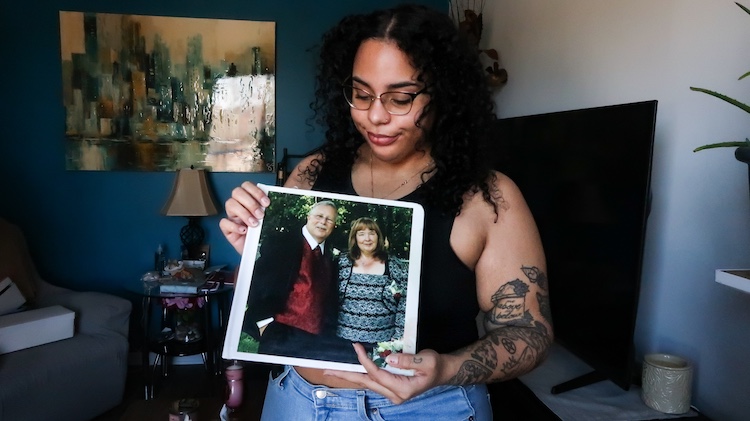
Tara Bigeault, 27, stands in her living room holding a picture book she cherishes. On the cover, is a photo of her late grandfather, Yves Bigeault and his wife, Bonnie. Photo by Nadia Liboneye.
Despite her young age, Bigeault was adamant about the tatto’s placement. Even the artist who did the work questioned her decision, but she stood firm.
“He tried to talk me out of getting it on my hand,” she laughs. “But I explained the significance — that spot was non-negotiable because of my grandfather.”
While Bigeault’s ink collection has since grown to over 30 tattoos, none hold the same emotional weight as that first tattoo.
“It was a mix of excitement and pride when I saw it finished,” she says. “But at the same time, when you get a tattoo in memory of someone, there’s this bittersweet feeling — you want to be able to show it to them, but they’re not there anymore.”
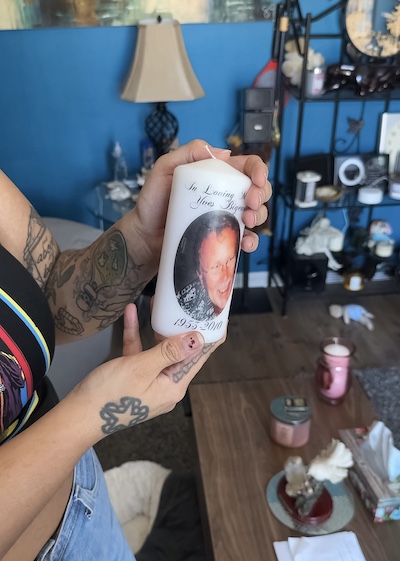
Tara Bigeault, 27, holds a commemorative custom candle made in memory of her late grandfather, Yves Bigeault. Photo by Nadia Liboneye.
For Bigeault, the tattoo became a tangible way to process her grief.
“People always say that when someone dies, they’re still with you, but it’s hard to feel that when you can’t see them or hear their voice,” she says. “But when you have something physically there, like a tattoo, it’s a reminder of that person in your daily life. It’s comforting in a way.”
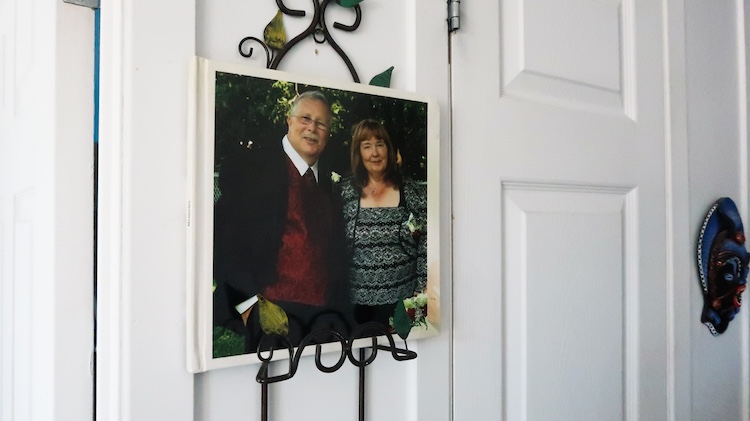
A picture book of important family memories hangs in the Bigeault family’s living room. Photo by Nadia Liboneye.
Montreal tattoo artist and owner of Private Tattoo Montréal, Jonathan Bourassa, has witnessed countless stories unfold in ink. With over 30 years in the industry, including 20 as a full-time tattoo artist, Bourassa understands the deep emotional motivations many clients bring to his chair.
“One woman got her kid’s name tattooed after they passed away. That one was obviously emotional,” he recalls.
Another memorable client was a man in his 50s who asked for a specific date to be tattooed.
“I asked what it was for, and he said it was the date he met his daughter—just three days prior,” he explains. “He’d met his daughter as an adult and was over the moon!”
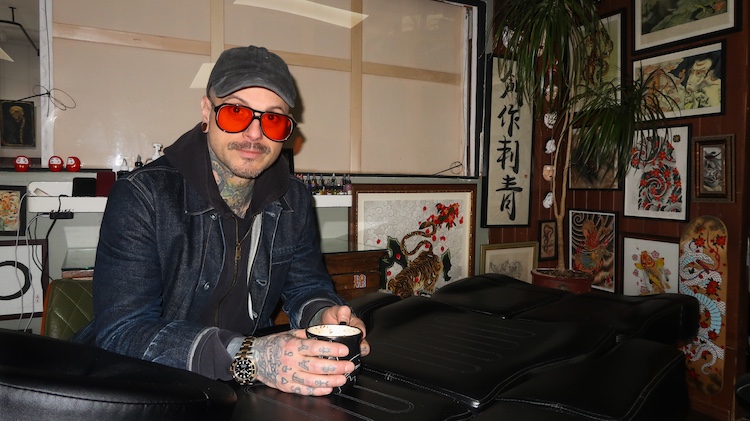
Jonathan Bourassa, owner of Private Tattoo Montréal, sits in his shop in the city’s Plateau Mont-Royal area. Photo by Nadia Liboneye.
For many clients, the process of getting a tattoo can be therapeutic, a way to highlight cherished memories, reclaim their bodies, or close painful chapters. As a tattoo artist, Bourassa frequently helps clients cover scars, including those that appear from self-harm.
Bourassa recalls a client who went through this experience.
“We’re almost done with his sleeve now, and you can’t see the scars anymore. His attitude completely changed,” he notes.
For this client, the tattooing process was more than cosmetic—it was a step toward emotional healing and self-acceptance.
“It’s 100 per cent life-changing for some people,” Bourassa adds.
The tattoo scene in Montreal is changing, has it always been like this or is this new territory? Video by Alessandro Commisso.
While tattoo artists like Bourassa witness firsthand the emotional transformations that tattoos can bring, mental health professionals offer additional insight into how art—both temporary and permanent—can support healing in complex emotional landscapes.
Psychotherapist Heather McLaughlin works as an art therapist. Though tattoos fall outside the official scope of art therapy, McLaughlin recognizes the emotional depth they can carry.
“There are all kinds of benefits people can get by deciding to get a tattoo that has meaning and significance,” she says. “It can mark a time in history, represent a connection, or symbolize something deeply personal. That act of claiming or owning something through art can be very powerful.”
The use of symbolism is central to art therapy, providing clients with meaningful ways to explore and work through their emotions. According to McLaughlin, these symbols are rarely interpreted universally; their meaning lies with the person who created them.
“Imagery can take on a life of its own in our thoughts and in our consciousness,” she explains. “It becomes part of our understanding of ourselves—sometimes consciously, sometimes not.”
Even the act of deciding on a design can foster emotional clarity, according to McLaughlin, giving individuals a way to externalize pain, resilience, or personal transformation.

Based on academic research, these are the top five emotional and psychological reasons people choose to get tattooed—from emotional healing to group affiliation. Infographic by Nadia Liboneye
For her, with a tattoo of her own marking a time of personal loss, the evolving relationship with the image is just as important as the ink itself.
“The symbol I chose had significance at that moment, but it has shifted over time,” she says. “That’s the thing about imagery—it lives with you. It can change meaning, invite reflection, and remind you of where you’ve been.”
For Bigeault, it’s the physical sensation of being tattooed that played a pivotal role in her grieving process. She describes the experience as cathartic—an intentional and controlled form of pain that contrasts with the emotional pain she suffered at a young age.
“Art in any form can be therapeutic,” Bigeault says. “There’s something about the process of getting a tattoo—the physical pain, the permanence—that mirrors the emotional pain you’re trying to process. It’s almost like turning a page in your life.”
